We had a very successful and informative women’s seminar Sunday, May 21, 2023. Thanks to all who participated.
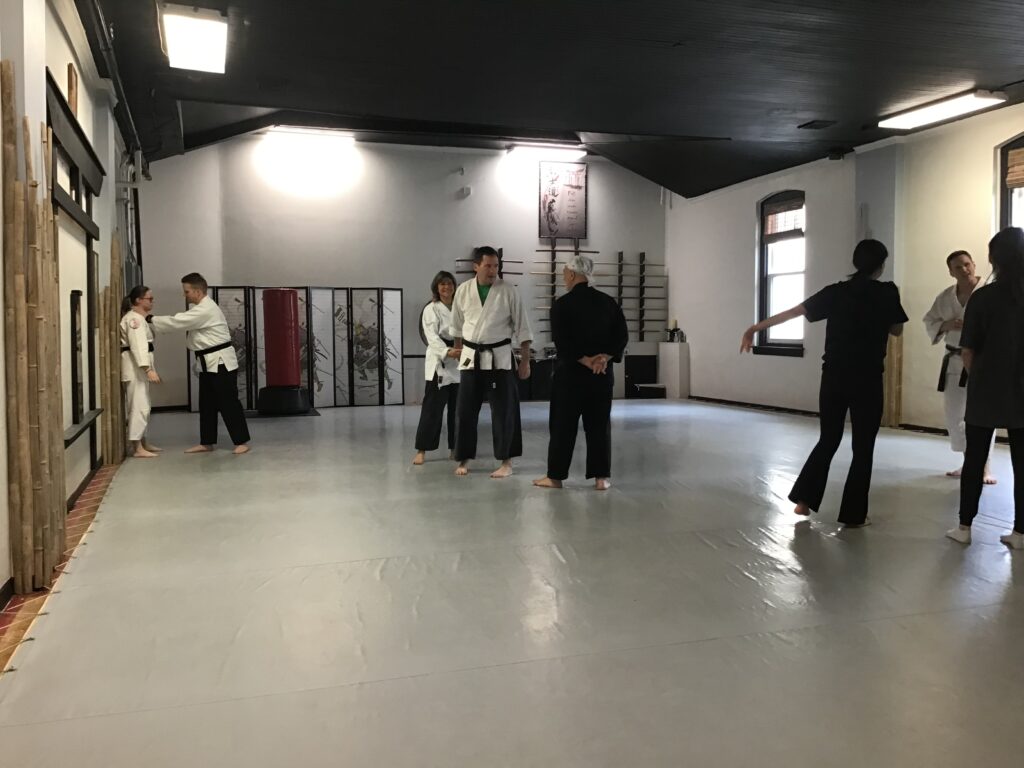
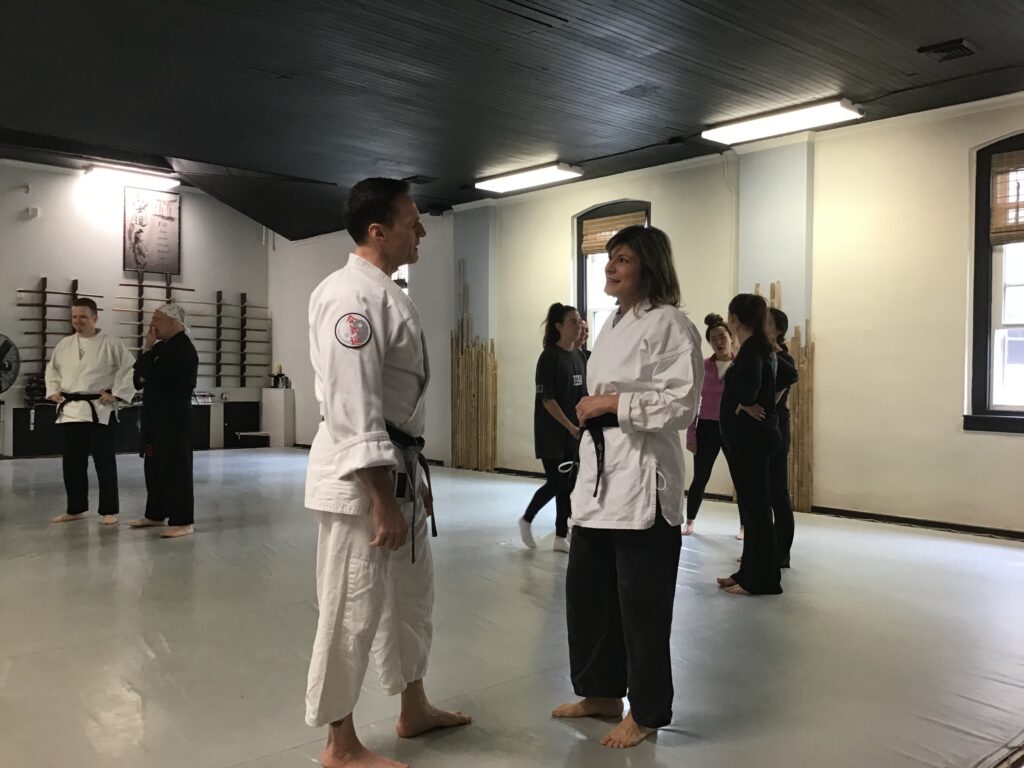
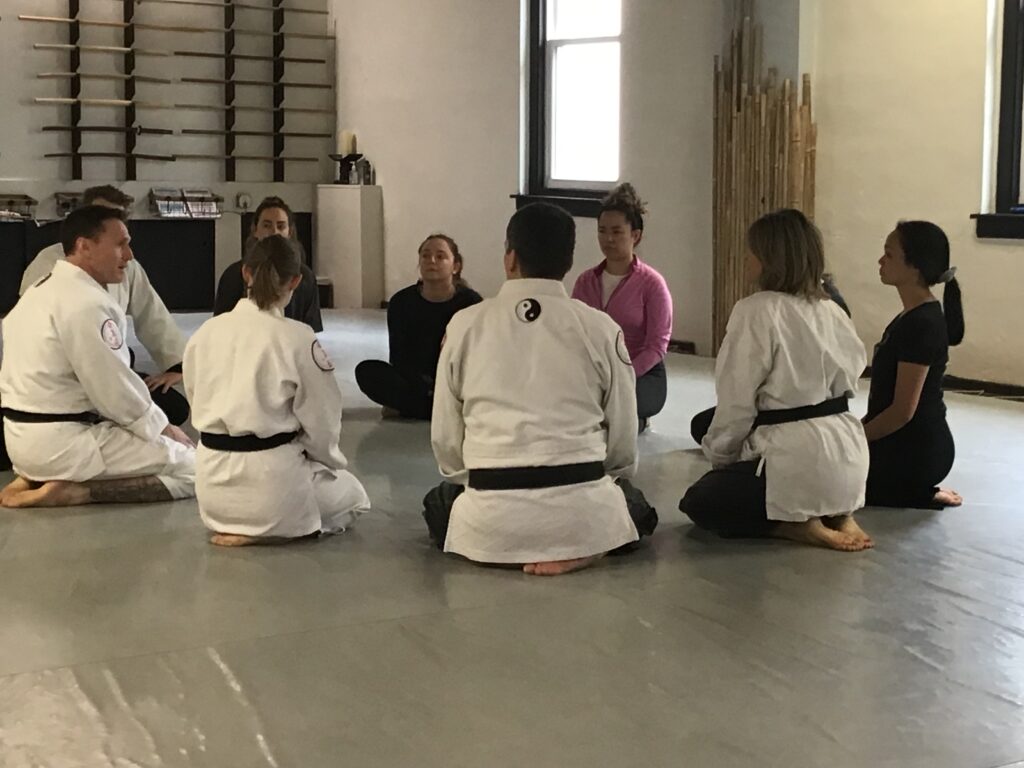
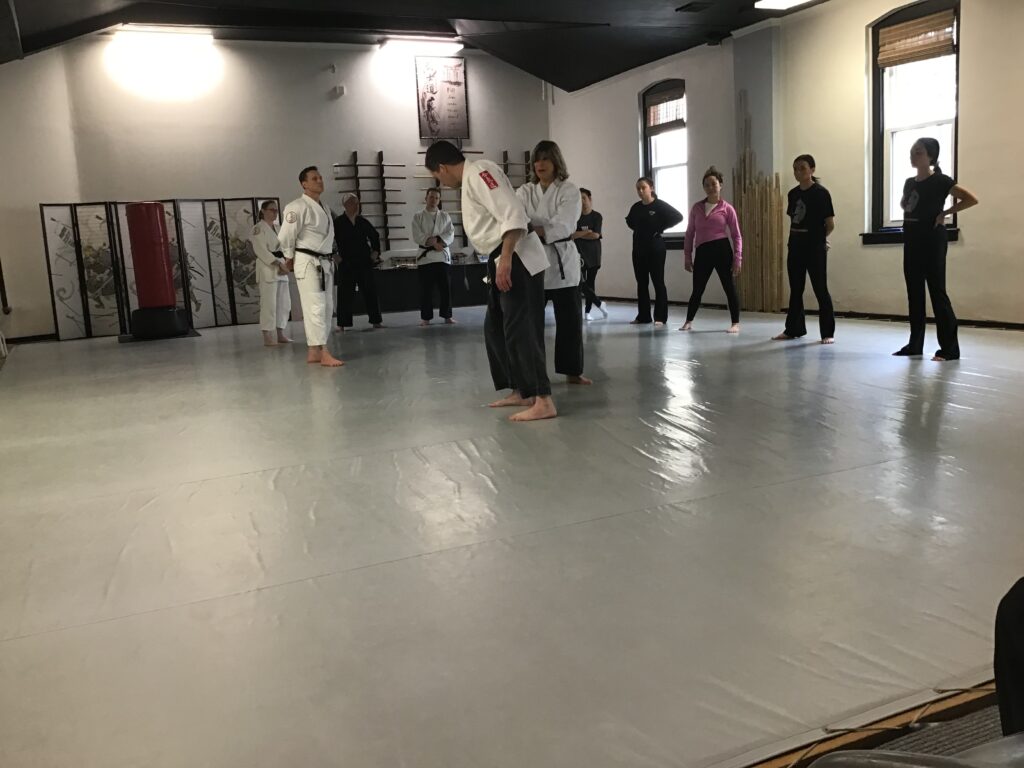
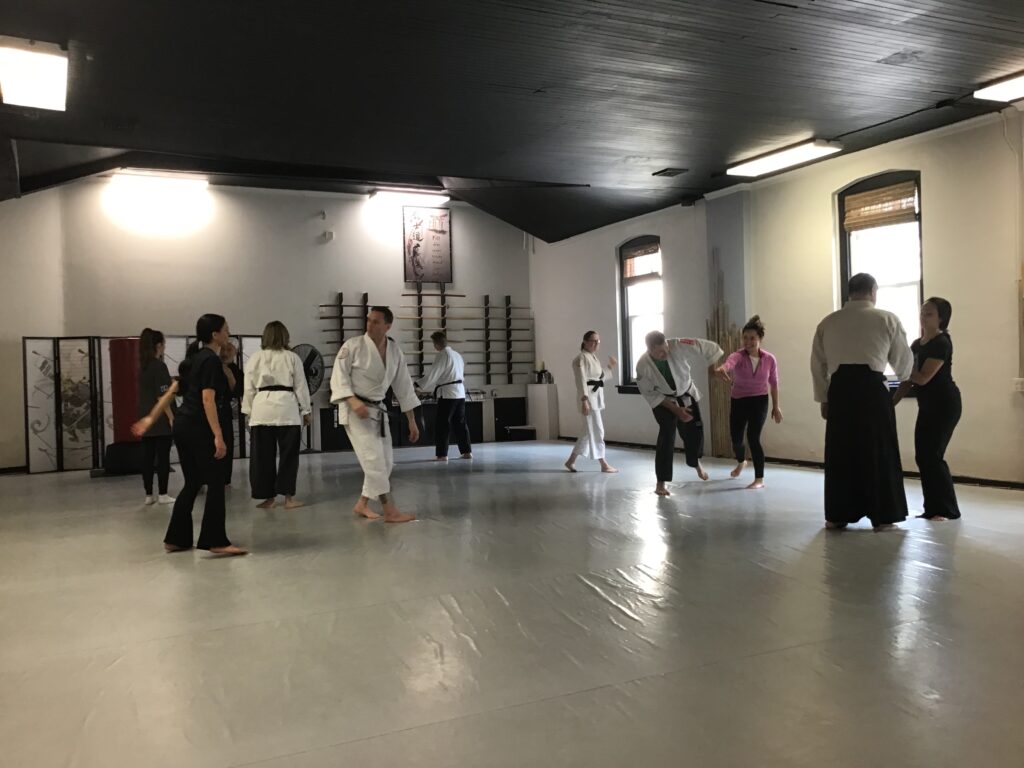
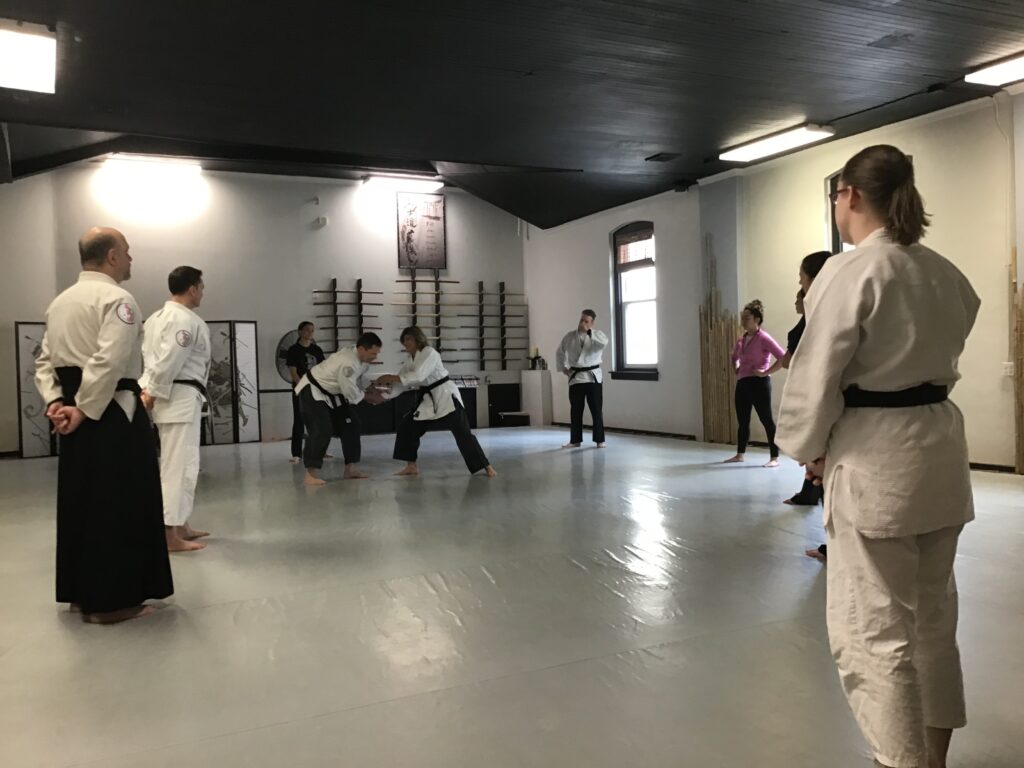
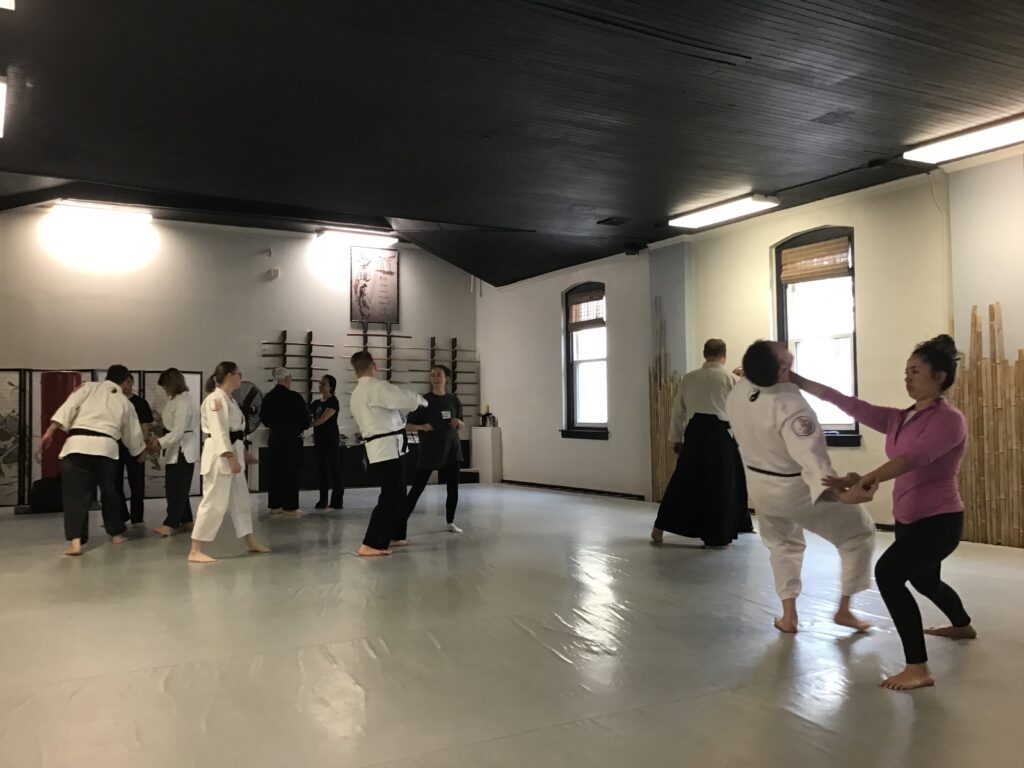
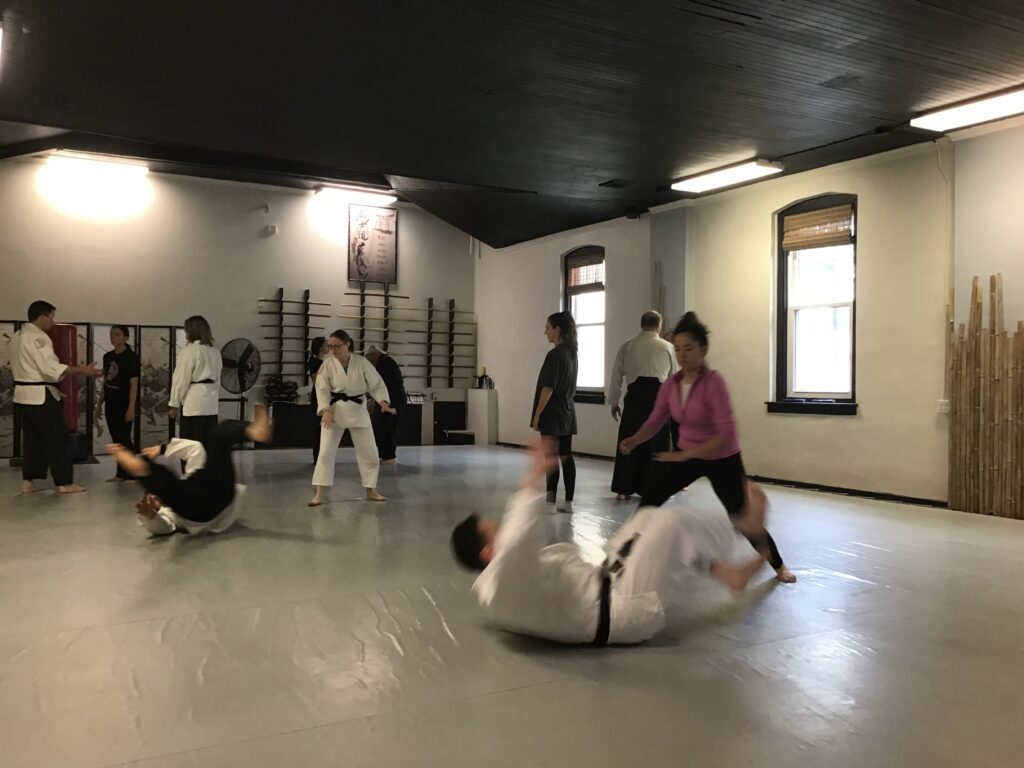
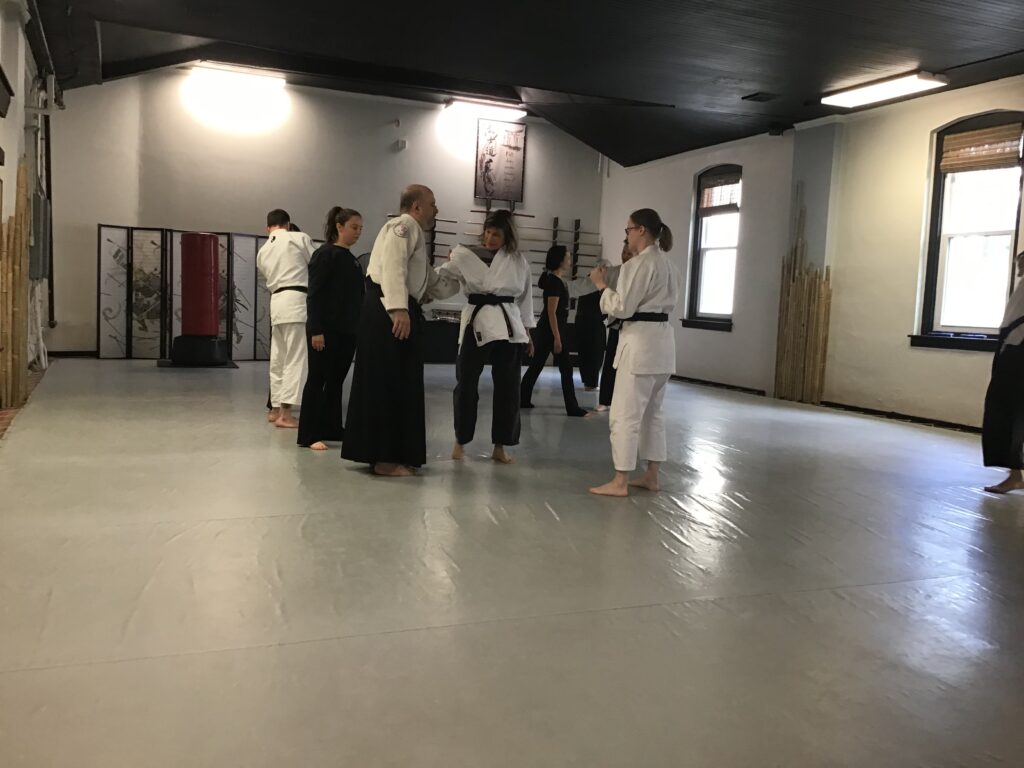
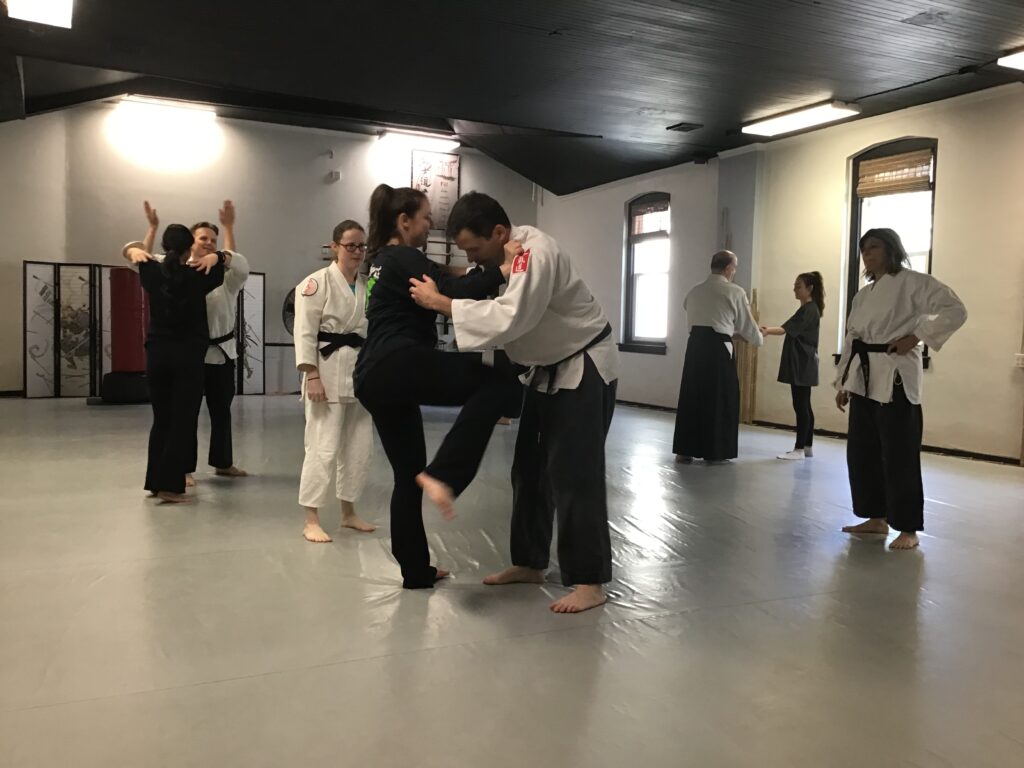
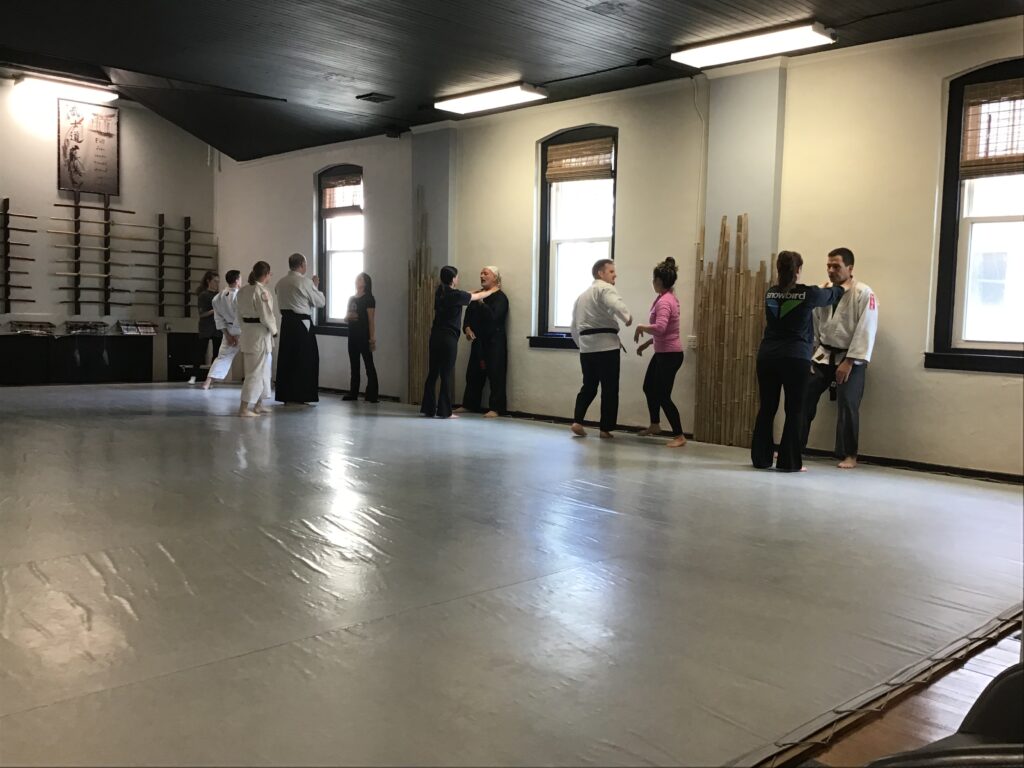
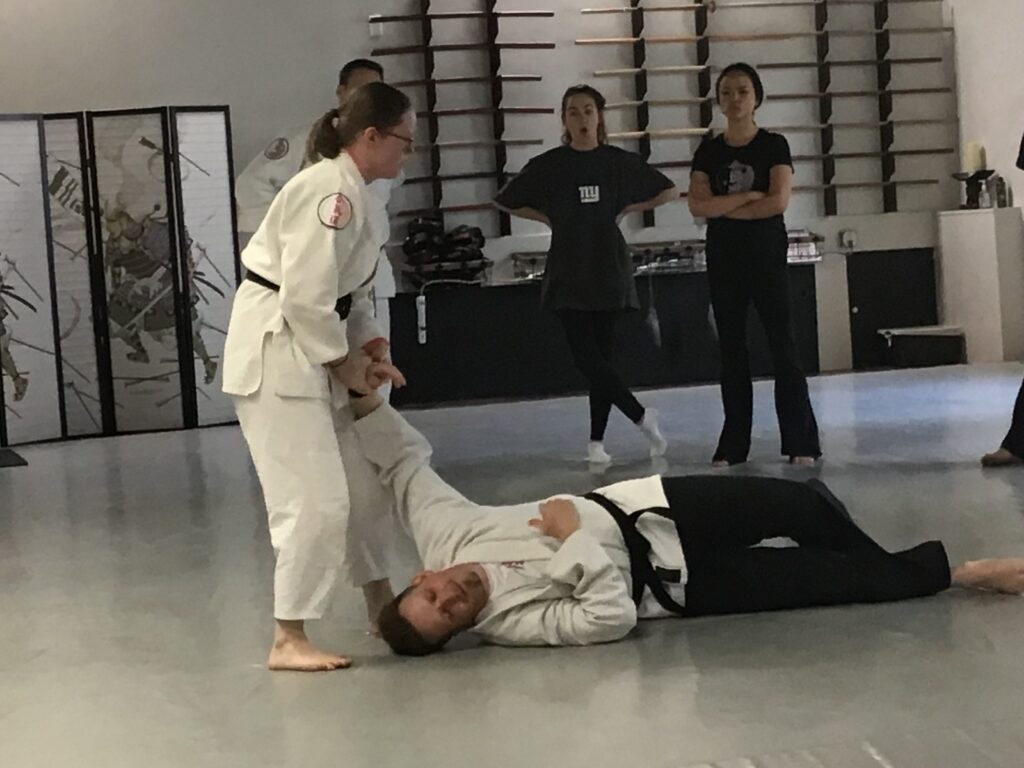
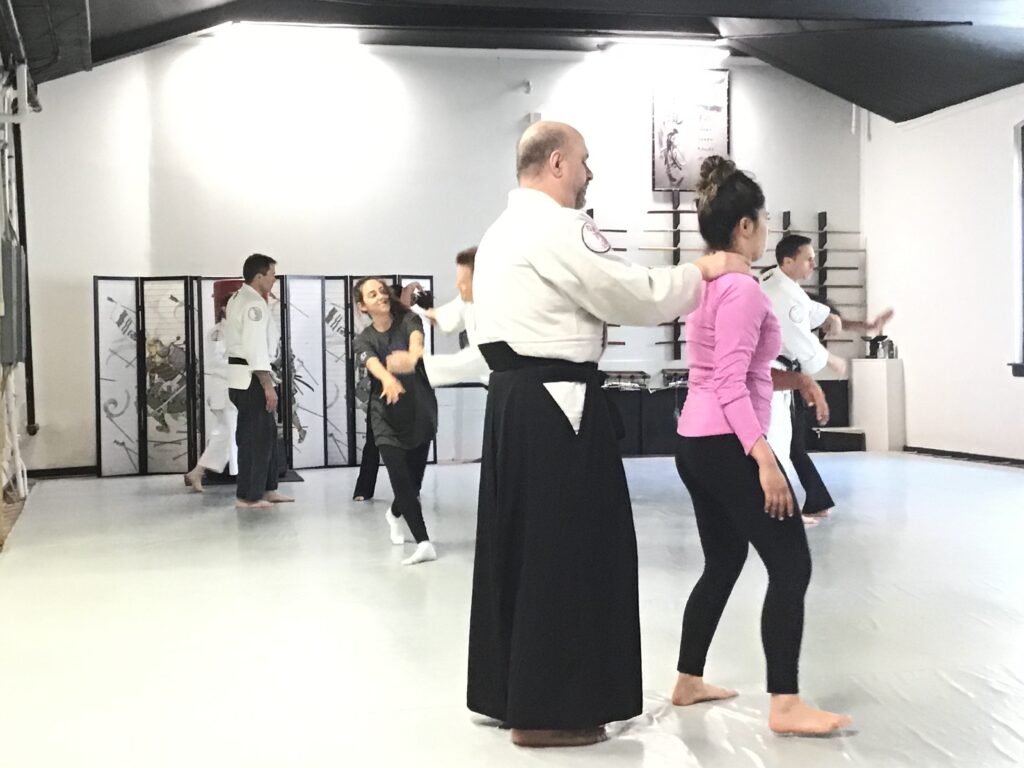
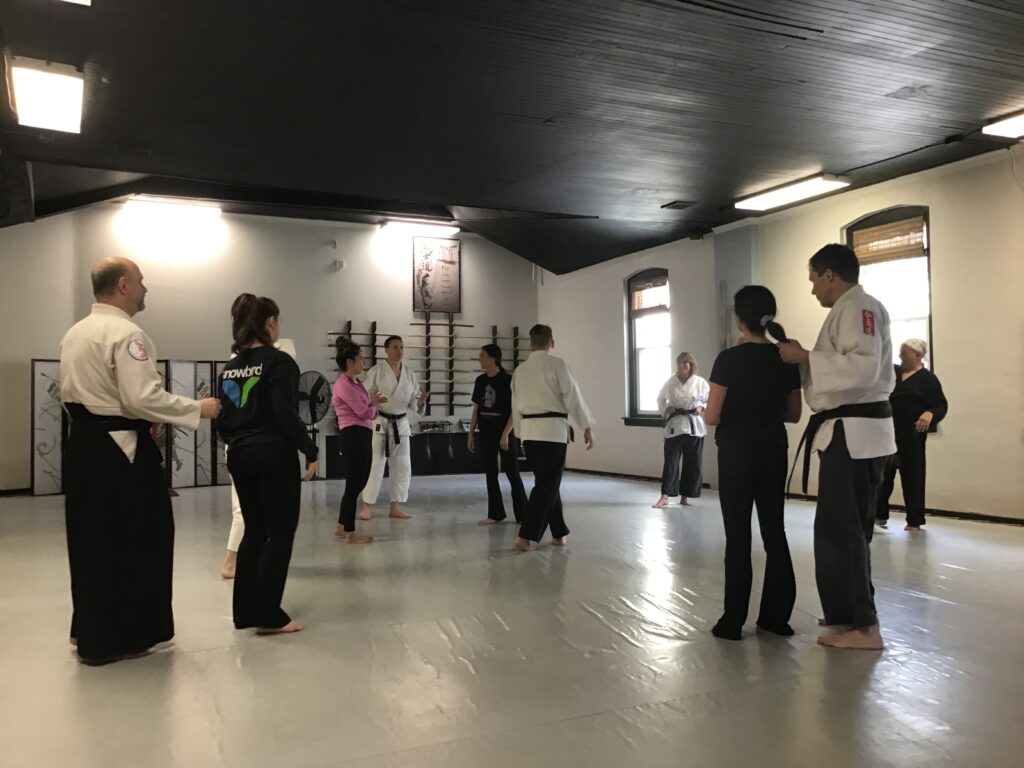
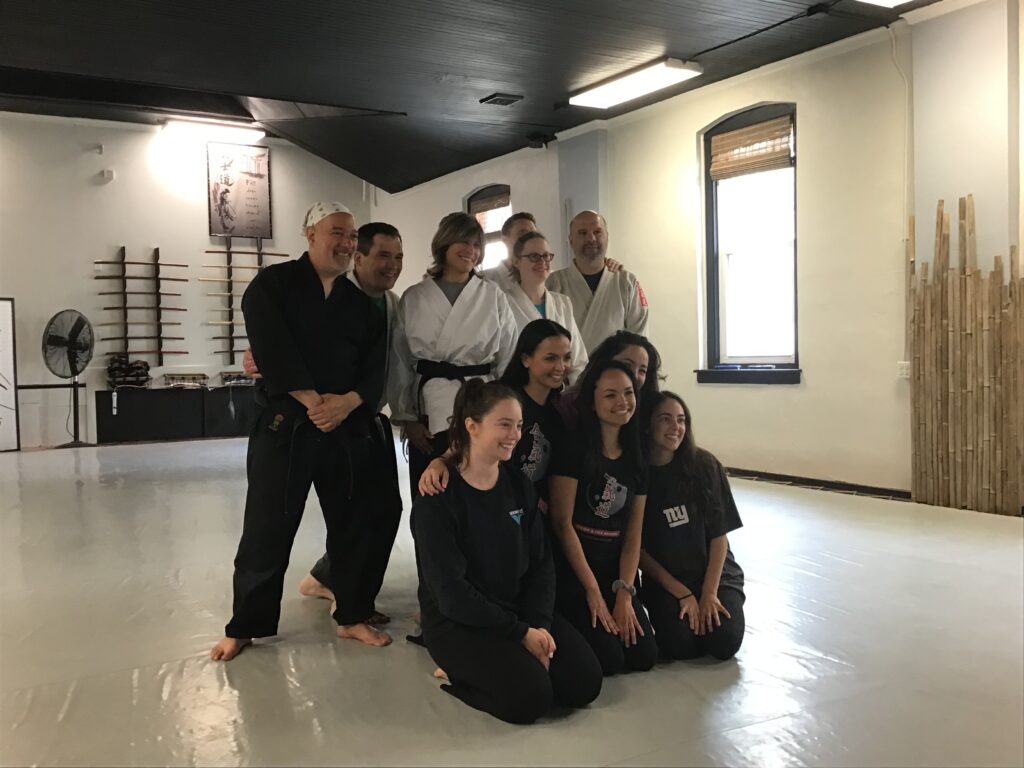
Dave is an advanced black belt and instructor, and co-head of school at The Martial Way. He oversees the dojo structure and operations. Dave was interested in martial arts at an early age and later was drawn to aikido during Steven Segal’s early years, particularly aikido’s philosophy of leveraging an attacker’s energy and momentum, combined with the power of unified body movement, joint locks and take downs. He first started aikido in 1998 with Aikido Kokikai of New Jersey. He joined the South Jersey Aikido Academy in 1999 and later transformed the school to The Martial Way in 2019. What Dave most appreciates about The Martial Way is that we take our training seriously but we don’t take ourselves seriously. We work hard as individuals to get better and help each along the way.
Dave trained for a couple of years in boxing under a former golden gloves boxer, tai chi for five years under Master William Ting and dabbled in jujitsu. He trained in four different styles of aikido including kokikai, aikikai, iwama ryu and tendo ryu. He is also trained in aikido weapons – aiki-ken and aiki-jo. When he travels for work or vacation he likes to visit other schools and has visited schools in several states and in other countries including the Philippines and Iceland.
Dave focuses on core body posture and movement, power with unity of body movement, and practical real-world situations and attacks. He believes in focus, intensity, fun and having positive learning mind.
Having 25 years Police experience, Kenyatta Kelly has had the opportunity along with the necessity to apply technique in various situations and has firsthand knowledge of the effectiveness of the art.
Kenyatta has studied under Chief Instructor, Sam Carney since 1997 and risen through the ranks to Yon-Dan. Under Sensei Sam’s tutelage, Kenyatta has grown tremendously in the essence and spirit of aikido.
“The Martial Way” is the new beginning of a nontraditional Academy that carries traditional values.
Kenyatta welcomes and anticipates providing deep rooted training via philosophical teaching.
Joe Diaco has been training in the martial arts since 1986; however, his aikido journey began in 1990 under Vince Salvatore Sensei as a result of an introduction to aikido through watching a few aikido demonstrations. In this time, he has participated in over 40 seminars with both international and U.S. aikido instructors. His aikido lineage is Morihei Ueshiba(Founder)–>Morihiro Saito Sensei–>Vince Salvatore Sensei–>J Diaco
Joe has earned a 3rd degree black belt in Tae Kwon Do under Robert F Turner, a sandan in Combat Yoshitsune Jujutsu, a shodan in Traditional Yoshitsune Jujutsu, both under Michael DePasquale Jr, and is certified to teach Wu Ji Jing Gong Taijiquan under Ting Sifu. The study of aikido, Japanese Jujutsu and Wu Ji Jing Gong remain ongoing pursuits. Joe Sensei is also a professor and department chairman of mathematics at Camden County College.
Joe focuses on the principles of aikido, such as movement and footwork.
Keith started training in aikido in 1977 at the New Jersey School of Aikido in Collingswood, NJ. He trained under Earl Lewis and Patty Schrader initially and then later under founder Sensei Robert Danza and Sam Carney. Keith followed Sensei Sam when he opened the South Jersey Aikido Academy in 1998. He initially started aikido as a quiet, small 11 year old child after his father saw a demonstration that Sensei Danza gave at a local venue. Keith spent about 15 years teaching children’s classes and private lessons to children and adults in Collingswood with emphasis on attack avoidance and movement.
Keith also spent a year studying Tae Kwon Do and teaching women’s self-defense courses at a small non-profit school in his late 20’s where he attained a rank of red belt. “The catalyst of exploring another art was to expand my knowledge and recognition of kicking attacks as it would apply to using aikido.”
Sensei Keith provides an emphasis on core technique structure and movement. Learning to guide and maximize the energy provided by an attacker is another focus of his classes. Since 2017 he has also added the use of sword based hand-deflections as an enhancement to our primary avoidance movements.
Wednesday 7:00 pm Adult Open Class
Sam Carney was introduced to aikido in 1965 when a dojo opened around the corner from his home. He studied for a short time then gave it up. In 1976, feeling that he was getting out of shape, he started training again. Since the dojo near his home had closed, he looked around and found the NJ School of Unarmed Self-Defense. He was advanced to shodan in 1981 and hired as full-time instructor/dojo manager in 1982. In 1998 after managing that dojo for 16 years he decided to strike out on his own and opened South Jersey Aikido Academy.
On his first stint as a martial arts student, he was attracted to aikido because the dojo was around the corner from his home. The second time around, he continued with aikido because he had so enjoyed the practice because of the combination of physical and philosophical which is a part of aiki.
Sam has teamed up with Dave Maturo to further develop both technique and philosophy. Sam remains the arbiter of technique development at The Martial Way.
Coming from a family of aikidoka, Crystal began her aikido journey in the mid-1990s in the children’s classes in the New Jersey School of Unarmed Self Defense. She joined the South Jersey Aikido Academy upon its opening in 1998 and later transitioned into Adult Classes. Crystal is very involved in the school and considers it her home away from home. She loves the friendly, safe, and inclusive nature of The Martial Way.
Focusing on teaching kids, Crystal feels it is crucial to have self defense abilities that do not rely on strength or size, as there will always be someone bigger and stronger. Having come up through the children’s program herself, Sensei Crystal’s philosophy is that lessons for young students should be engaging and fun while still demonstrating effective technique and upholding fundamental standards.
Al has been a student of aikido since 1985 and an instructor since 1988. He started his formal training at the New Jersey School of Unarmed Self Defense as a member of the Hombu Aikido Federation. Al moved over to the South Jersey Aikido Academy (The Martial Way Dojo) upon its opening. He has had the honor and privilege to attend seminars and actively train with such aikido legends as Morihiro Saito Sensei, Patricia Hendricks Sensei and Vince Salvatore Sensei.
Although his desire to learn self-defense drove him into the dojo, he focuses heavily on the traditional aspects of the art and the sense of balance and control it brings to each practitioner. The blending of modern defense tactics and traditional skills make training with Al both challenging and rewarding. Al is excited about the future of The Martial Way dojo and its commitment to the art and the people who train there. He is passionate about learning from both instructor and other students each and every day. He fills in teaching group classes when needed.
Thursday 8:15pm
| Monday | Tuesday | Wednesday | Thursday | Friday | Saturday | Sunday |
|---|---|---|---|---|---|---|
| 6:30pm-8:00pm tai chi class | 5:30pm-6:30pm kids open class (all belt levels) | 5:30pm-6:30pm kids open class (all belt levels) | 5:30pm-6:30pm kids open class (all belt levels) | 5:30pm-6:30pm kids open class (all belt levels) | 9:00am-10:00am aikido/aikijutsu | 8:00am-10:00am wing chun class |
| 8:15pm-9:15pm tai chi sword class | 7:00pm-8:30pm aikido/aikijutsu | 7:00pm-8:30pm aikido/aikijutsu | 7:00pm-8:00pm aikido/aikijutsu weapons | 7:00pm-8:30pm aikido/aikijutsu | 10:15am-11:45am aikido/aikijutsu | |
| 8:45pm-9:45pm aikido/aikijutsu | 8:45pm-9:45pm wing chun class | 8:15pm-9:45pm aikido/aikijutsu | 12:00pm-1:00pm kids open class (all belt levels) | |||
| 1:30pm-2:30pm kids open class (all belt levels) | ||||||
| 3:00pm-4:30pm aikido/aikijutsu (advanced only brown belt and up) | ||||||
| 5:00pm-6:00pm blackbelt meeting (monthly) | ||||||
| 6:00pm-8:00pm testing (monthly) |
Sensei Adam was first introduced to aikido in 2004 by his now wife, Richelle. He acquired his Shodan (1st degree black belt) in 2007 Since then he has continued to develop his passion for the art. He is now training to pass his 2nd degree black belt otherwise known as Nidan.
Gordon Mueller is a veteran martial artist with nearly 50 years of training. He has been inducted into the Tactical Hall Fame for the International Martial Arts, 2001 USA. He has been teaching Gloucester and Camden County police recruits for over 35 years in Defensive Tactics, Tactical Handcuffing and Weapon Disarms. He is trained in judo, aikido, tae kwan do, and holds a black belt in Chinese Kempo.
For Special Offers and Upcoming events
Tony Pallante has been training in aikido and marital arts for nearly 50 years. He is the most experienced instructor at the Martial Way and has trained also in fencing, silat, tai chi, boxing and more. He is experienced at the highest levels with aikido hand technique and weapons.
Mark started his training in aikido at the NJ School of Unarmed Self Defense in Collingswood, NJ in 1994 under the direction of Robert Danza Sensei, earning the rank of Shodan in February 1997. After Danza Sensei’s retirement in 1998, his training continued at the South Jersey Aikido Academy under the direction of Sam Carney Sensei and eventually he trained exclusively with Rabon Jones Sensei of the Kai Shin Ryu Aikido dojo earning his Yondan in Aikido in February 2004. In 2012, he also began training in the United States Aikido Federation at the Vineland Aikikai Aikido dojo under the direction of Peter Tamagni Shihan and currently holds the rank of Sandan in that organization.
Starting in January 2002, under the direction of Rabon Jones Sensei, Mark began training in Goju Ryu Karate earning my Shodan in January 2004. Mark trained with Jones Sensei until his passing in late 2004. My training continued under the direction of Master Ramon Santiago in the Universal Systems of Martial Arts / Warrior Phoenix Martial Arts. He currently holds the rank of Sandan in Goju Ryu in that organization. He is a member of the World Karate Union Hall of Fame, being inducted as Master of the Year for Aikido in June 2013 and a member of the Philadelphia Historic Martial Arts Society (PHMAS) being inducted into their Hall of Fame for Aikido in July 2019.
Having 25 years of training and teaching classes and seminars in aikido, Mark has helped students accomplish the goals that they have set for themselves. “The martial arts have been a great influence on my life. I continue to teach and help students learn the values and beliefs that the martial arts [have] taught me.”
Please let us know when you would like to come in and observe a class.
To view a class schedule click here
Aikido’s techniques include: irimi (entering), and tenkan (turning) movements (that redirect the opponent’s attack momentum), various types of throws, takedowns and joint locks. Aikido derives mainly from the martial art of Daitō-ryū Aiki-jūjutsu, but began to diverge from it in the late 1920s and is believed to incorporate other martial arts including Chinese styles such as kung fu and wing chun.
Ueshiba’s senior students have different approaches to aikido, depending partly on when they studied with him. Today, aikido is found all over the world in a number of styles, with broad ranges of interpretation and emphasis. However, they all share techniques formulated by Ueshiba and most have concern for the safety and well-being of the attacker. Aikido practitioners often refer to Ueshiba as O-Sensei, which means “great teacher.”
The goal of aikido is to disarm the attacker and neutralize the attack while not permanently injuring or unduly harming the attacker, but rather set them upon the right path of virtue and harmony. It is a Japanese martial art that uses a person’s weight, energy and momentum – along with takedowns, joint locks and pins – to neutralize the attack, and disarm and control the attacker. As a result, aikido does not rely on overpowering your opponent with superior physical strength and speed. Using aikido, people can learn to develop their inner power and mind-body coordination; and defend themselves effectively even if they do not believe they have adequate strength, speed or agility.
Aikido is a unique martial art for additional reasons. Unlike many martial arts, aikido’s core philosophy includes the belief that attacks frequently come from more than one assailant – multiple assailants and at the same time. The approach and techniques of Aikido allow a person to avoid, evade and counter the intentions, movements and attacks from one person up to five people all at once. Aikido also uses traditional Japanese wooden weapons in training. These include the jo staff, boken or wooden sword, and tanto or wooden knife. Often the movements of the hand-to-hand techniques are similar to those of the wooden weapons, which helps practitioners accelerate their proficiency in Aikido overall.
Aikido is literally the way of harmonizing with energy. It has a foundation of core techniques and fundamentals, and these remain open to interpretation allowing for near limitless variations of techniques and applications. It does not share the rigidness of other arts that remain fixated on traditional forms. Aikido is a living, breathing and highly adaptive art. It actively looks to the outside environment and even the attacker as a source of input and energy with which we learn, grow and adapt to new and changing threats you may face in the real world.
Because the art is fluid and adaptive, students can train as hard or soft as they wish and still benefit tremendously. Aikido is a challenging art to master, and there seems to be new peaks to achieve even after years of training. This makes aikido an art that will continually challenge you for years to come, and it can provide fun, engagement and fulfillment throughout your life. Should you choose, it could be a forever path to walk upon? There is always something new to learn and a new challenge to overcome. Some choose to practice for self-defense, some for physical fitness, some for emotional and spiritual development and self-fulfillment, and others simply to have fun and make new friends. Many practice aikido for several of these reasons and value having it as a part of their lives.